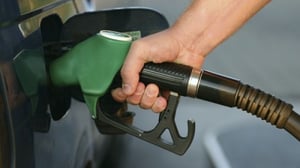2 min read
Best Personal Finance Books for 2019
The world of finance is always changing, which means advice you received years ago might not be a good idea anymore. To make sure you’re caught up on...
Manage your everyday finances with convenient accounts, flexible cards, and personalized service designed to fit your life.
At First Federal Bank, we offer flexible mortgage solutions for almost any situation, helping you secure the right financing for your dream home.
Business banking offers secure financial management, streamlined transactions, credit options, and tools to help businesses grow efficiently and sustainably.
2 min read
First Federal Bank : December 10, 2019 1:53:00 PM EST

 It seems like only yesterday you filled your car’s gas tank up, and already you’re back at the pump filling it up again. Where did all that gasoline go? Your car is burning through gas much faster than it needs to be, and you probably don’t realize it. To reduce your vehicle’s fuel consumption and travel more on a single tank, follow some of these expert tips.
It seems like only yesterday you filled your car’s gas tank up, and already you’re back at the pump filling it up again. Where did all that gasoline go? Your car is burning through gas much faster than it needs to be, and you probably don’t realize it. To reduce your vehicle’s fuel consumption and travel more on a single tank, follow some of these expert tips.
Constant acceleration and braking burn through gasoline quickly, so Kira Botkin of Money Crashers recommends coasting and gliding when possible. Instead of applying your brakes hard to slow momentum at an intersection, take your foot off the gas and let the car gradually slow to a crawl — and then apply the brakes. You can also let your car glide down hills, when exiting a highway and when you’re nearing a right-hand turn. This lets the car utilize its natural momentum to propel it, rather than force the engine and brakes to work extra. Similarly, when you’re on a long stretch of flat road — like a highway or the countryside — activate the cruise control. That way, you’re not tempted to accelerate and decelerate more than necessary. Smooth accelerating and braking and a consistent speed can also put less wear on the tires, brakes and powertrain.
If your car is carrying extra items that increase its total weight, the engine will need more power (and therefore more gas) to get the vehicle up to speed. Thus, Botkin advises reducing any unnecessary weight — especially if you pilot a front-wheel drive car and carry a lot of junk in the trunk. Carrying items on the car’s roof isn’t necessarily better for fuel economy, though. Consumer Reports found that carrying items like bicycles on the roof can reduce fuel economy by as much as one-third, due to extra weight and wind resistance. Remove any car racks or storage boxes when they’re not being used.
It’s true that under-inflated tires negatively impact your car’s fuel efficiency. Dan Collins of Car Bibles explains that flat, flabby tires suffer from increased rolling resistance against the ground. To avoid this, make sure the tires are inflated to their recommended level by inspecting them frequently. A basic non-digital tire gauge only costs a couple bucks and is an effective way to evaluate tire inflation. Collins also recommends researching the types of tires and tread patterns to find the set that offer the best balance of function and efficiency. Different kinds (such as winter vs. all-season) and designs have different rolling resistances, so don’t ride on tires that give more grip than necessary.
The gasoline you inject into your car’s reservoir has as much influence on the mileage you get out of it as your driving habits and vehicle condition do. Collins warns to not stray from the octane rating prescribed by the manufacturer in the model’s manual. Otherwise, you could be paying more money for a type of gasoline that’s less effective. Collins also shares a secret for getting the most gas at the pump: Fill up in the morning, not in the evening. He explains that because the liquid is cooler from lower ground temperatures overnight, it’s denser, so you’ll get more gas pumping at the crack of dawn than you would filling when the molecules have warmed and expanded.
There are dozens of other factors that could negatively impact your car’s fuel economy, so research the best driving practices and maintenance techniques to get the most out of every gallon.

2 min read
The world of finance is always changing, which means advice you received years ago might not be a good idea anymore. To make sure you’re caught up on...

Filling out your tax return is stressful enough, but realizing that you owe more than what you can afford to the Internal Revenue Service can be...

If your business has grown to operating in more than one state, you will need to file taxes for each location. Doing so can be tricky, but knowing...